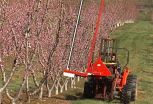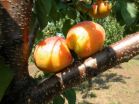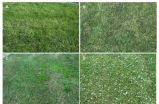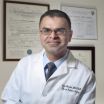(Press-News.org) Chapel Hill, NC – In a new paper published this week in the Proceedings of the National Academy of Sciences, Aziz Sancar, MD, PhD, the Sarah Graham Kenan Professor of Biochemistry and Biophysics in the UNC School of Medicine, and his colleagues have taken an important step in understanding the underlying molecular signals that influence a broad array of biological processes ranging from the sleep-wake cycle to cancer growth and development.
Scientists who work in this field, known as chronobiology, have identified the genes that direct circadian rhythms in people, mice, fruit flies, fungi and several other organisms. However, the mechanisms by which those genes interact with light in the organism's environment have not been well understood.
Circadian rhythms are the physical, mental and behavioral changes that follow the earth's 24 hour cycle, responding primarily to light and darkness in an organism's environment.
About 15 years ago, Sancar discovered a human protein called cryptochrome which acts as a core component of the molecular clock in mammals. The protein is also found in fruit flies, other insects, and plants.
"Cryptochrome 'resets' the circadian clock, but we were not sure how it worked," said Sancar, who is also a member of UNC Lineberger Comprehensive Cancer Center.
Using fruit flies (Drosophilia melanogaster), the team purified cryptochrome and developed a biochemical test that shows when and how the protein transmits signals.
"We can now detect the protein at work. When we expose cryptochrome to blue light in fruit flies, a millisecond of light exposure has a half-life during which we can examine the mechanism in the laboratory," said Sancar. "We can follow the molecular signals after light exposure and have a reliable model to test various hypotheses about how light interacts with the circadian systems we know are so important to biological processes."
The research may be useful to scientists who study the circadian clock's relationship to sleep disorders, jet lag, cancer, bipolar disorder, depression and other diseases.
INFORMATION:
Sancar's research collaborators include Nuri Ozturk, PhD, Christopher Selby, PhD, and Yunus Annayev, BSc, of UNC-Chapel Hill's Department of Biochemistry and Biophysics and Donping Zhong, PhD from the Ohio State University.
The research was supported by the US National Institutes of Health.
UNC scientists pinpoint link between light signal and circadian rhythms
2010-12-30
ELSE PRESS RELEASES FROM THIS DATE:
Hybrid string blossom thinner tested in peach orchards
2010-12-30
GETTYSBURG, PA – Peach producers have traditionally relied heavily on hand thinning, a necessary but costly and labor-intensive field practice. Impacted by increasing labor costs and a limited workforce, peach and other stone fruit growers are turning to mechanical methods such as string thinners to minimize the need for hand thinning. A new ''hybrid'' string thinner prototype showed promising results when it was evaluated in four U.S. growing regions; the trials resulted in significant labor savings and increased peach size.
According to Pennsylvania State University's ...
Genetic relationship between Hungarian and Turkish apricots confirmed
2010-12-30
BUDAPEST, HUNGARY – Apricots are important to Turkey, the country where more apricot crops are grown and exported than anywhere in the world. Looking to unlock the mystery of apricots' origins and increase crop production, scientists are studying the genetic relationship between apricot varieties. New research from a team of Hungarian and Turkish scientists has confirmed the genetic link between Turkish and Hungarian apricot cultivars, yielding information that provides valuable data for apricot growers and breeders.
It is widely believed that apricots originated in China, ...
Turfgrass fertility, pesticide programs compared
2010-12-30
WEST LAFAYETTE, IN – Traditional turfgrass management programs rely heavily on the use of synthetic pesticides and fertilizers. In response to increased public scrutiny and legislation, organic and biological alternatives are becoming more accepted, but research indicates that these alternatives have not been widely adopted by either homeowners or the lawn care industry. Results of a new study that compared common but disparate turfgrass management approaches may help lawn care professionals to evaluate, market, and implement alternative management programs.
Purdue University ...
Indoor plant intervention: New answers for health care design?
2010-12-30
NORWAY – Could a plant "intervention" improve the well-being of patients in a difficult rehab process? Scientists from the Norwegian University of Life Sciences and Sweden's Uppsala University investigated this question in a recent study of 436 coronary and pulmonary patients at a Norwegian rehabilitation center. The results were published in HortScience. Ruth Kjærsti Raanaas, Grete Grindal Patil, and Terry Hartig studied the effects of an indoor plant intervention during a 2-year study conducted at the Røros Rehabilitation Center. The experiment showed that patients' overall ...
Children in areas with few pediatricians at higher risk for serious appendix ruptures
2010-12-30
Children who live in areas with fewer pediatricians are more likely to suffer life-threatening ruptures of the appendix than those in areas with more pediatricians, even when accounting for other factors such as the number of hospitals, imaging technology, insurance coverage and the number of surgeons in an area, according to a study from the Johns Hopkins Children's Center.
The study's findings, based on an analysis of nearly 250,000 hospital records of children with appendicitis, are published online in the December issue of JAMA-Archives of Surgery.
"Our analysis ...
Protein involved in cystic fibrosis also plays role in emphysema, chronic lung disease
2010-12-30
A team of Johns Hopkins Children's Center researchers has discovered that a protein involved in cystic fibrosis (CF) also regulates inflammation and cell death in emphysema and may be responsible for other chronic lung diseases.
The findings, published online in the December issue of The Journal of Immunology, pave the way toward new treatments to prevent lung damage caused by infections or cigarette smoke in emphysema.
The protein, called CFTR (cystic fibrosis transmembrane conductance regulator), is already well known for its role in transporting chloride in and ...
Coma and general anesthesia demonstrate important similarities
2010-12-30
NEW YORK (Dec. 30, 2010) -- The brain under general anesthesia isn't "asleep" as surgery patients are often told -- it is placed into a state that is a reversible coma, according to three neuroscientists who have published an extensive review of general anesthesia, sleep and coma, in the Dec. 30 issue of the New England Journal of Medicine. This insight and others reported in their review article could eventually lead to new approaches to general anesthesia and improved diagnosis and treatment for sleep abnormalities and emergence from coma.
The researchers explain that ...
Longevinex exhibits L-shaped safety curve for first time in resveratrol biology
2010-12-30
Las Vegas, Nevada (Dec. 30, 2010) – It was Paracelsus, the Renaissance physician (1493-1541 A.D.) who first said "the dose makes the poison." So, you can drink too much wine, or ingest too much resveratrol, but in an unprecedented study, heart researchers report they couldn't find a toxic dose for Longevinex®, a resveratrol-based dietary supplement.
Investigators previously reported that six or more glasses of red wine per day actually increase the risk, whereas 3-5 glasses per day optimally reduce risk for cardiac death. This is the well-known J-shaped risk curve ...
Merrill DataSite Captures Repeat Industry Honors as "Product/Service of the Year"
2010-12-30
Merrill Corporation (www.merrillcorp.com), a leading provider of technology-enabled services, is pleased to announce that Merrill DataSite was named "Product/Service of the Year" for the second year in a row at the at the 9th Annual M&A Awards, presented by the M&A Advisor. The awards gala, which honors professionals in the mergers and acquisition industry, took place at the New York Athletic Club on Dec. 14, 2010.
The M&A Awards honored deal-teams, dealmakers, and firms whose activities set the standard for the industry. This year, 243 finalists in 47 categories were ...
Indie Perfumery Introduces a New Fragrance for Women: "Snaub Wedding Day"
2010-12-30
A perfume specifically designed just for your wedding day? Why hasn't anyone thought of that before?
Perfume is one part of the wedding many brides give only a passing thought. It's not uncommon for a bride to spend thousands of dollars on just a dress. Another small fortune for a cake, a dj, a venue and catering. But why grab the same department store perfume or a perfume named after a celebrity when you can wear the perfume created just for brides?
Snaub Worldwide (pronounced just like Snob) has launched a new perfume called Snaub Wedding Day.
The perfect fragrance ...





